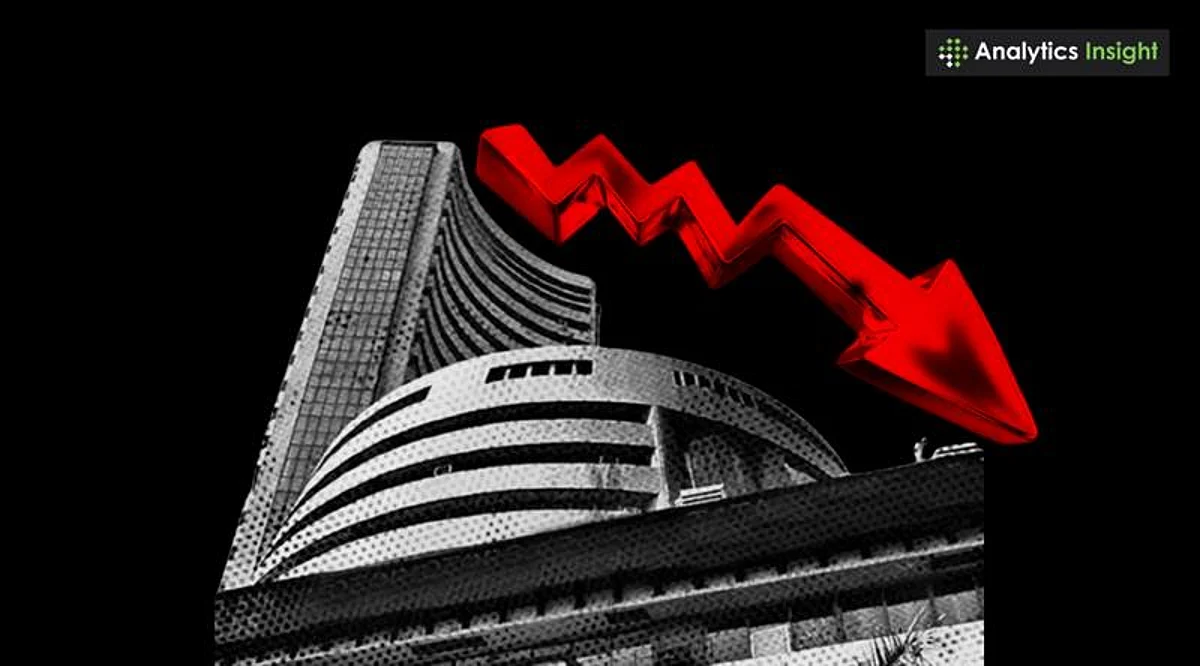The Indian stock market experienced a significant decline on July 11, 2025, with the BSE Sensex closing at 82,508.89, down 681.39 points or 0.82%. The Nifty 50 followed suit, settling at 25,155.70, a decrease of 199.55 points or 0.79%. This downturn is primarily attributed to disappointing earnings reports, particularly from Tata Consultancy Services (TCS), alongside renewed concerns over trade tariffs imposed by US President Donald Trump.
The trading session saw the Sensex open at 82,820.76, quickly dropping to an intraday low of 82,451.50. Similarly, the Nifty 50 began at 25,255.50 and fell to an intraday low of 25,136.75. The overall market capitalization of companies listed on the BSE diminished by approximately Rs. 3 lakh crore, from Rs. 460 lakh crore to nearly Rs. 457 lakh crore.
Investors reacted negatively to TCS’s Q1 earnings report released the previous day. The company reported revenues of $7.42 billion, falling short of analyst expectations of $7.54 billion. This marked TCS’s third consecutive quarter of declining revenue, with a 0.59% sequential decline and a 1.12% year-on-year drop. The results were the worst for TCS since June 2020, generating concerns about the broader IT sector’s performance.
Market Response and Sector Performance
The selloff was widespread, affecting midcap and smallcap indices. Leading losses among Nifty 50 stocks were IT and auto companies, with TCS down 3.28%, followed by Wipro (-2.28%) and Mahindra & Mahindra (-2.33%). The telecom sector also faced pressure, notably with Bharti Airtel’s shares falling over 2% as global brokerage firm UBS downgraded the stock from ‘neutral’ to ‘sell’, citing concerns over the anticipated tariff hikes.
Despite the broad market downturn, some stocks showed resilience. Hindustan Unilever Limited (HUL) rose by 4.57%, and several financial institutions, including SBI Life Insurance and Axis Bank, also recorded slight gains. Nonetheless, the majority of sectors, including IT, automotive, and oil & gas, saw declines exceeding 1%.
Investor sentiment was further soured by President Trump’s announcement of a 35% tariff on Canadian imports, effective August 1, and the potential for increased tariffs on other nations. This escalation in trade tensions raised fears of global economic slowdown and inflation, making investors more cautious as they shifted toward safer assets.
Outlook and Future Implications
The Indian stock market is expected to remain volatile as the Q1 FY26 earnings season progresses. Analysts, such as Shibani Kurian, Senior Fund Manager at Kotak Mahindra AMC, suggest that the Nifty 50 currently trades at a price-to-earnings ratio of nearly 22 times the expected earnings for FY26, indicating potential for moderate returns amid subdued earnings growth projections.
Market experts, including VK Vijayakumar from Geojit Investments, emphasize that the ongoing corrections in overvalued markets could lead to India’s underperformance compared to other emerging markets. As investors navigate these uncertainties, the shift from equities to traditional safe-haven assets, such as gold, has been evident, with the price of MCX Gold surging to an intraday high of Rs. 97,548 per 10 grams.
The immediate future will hinge on the upcoming Q1 earnings updates and management commentary. Investors are advised to closely monitor developments in both domestic corporate performance and international trade policies, as these factors will significantly influence market sentiment in the short term.






































































